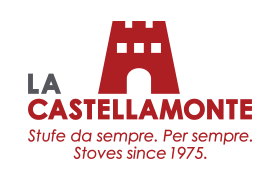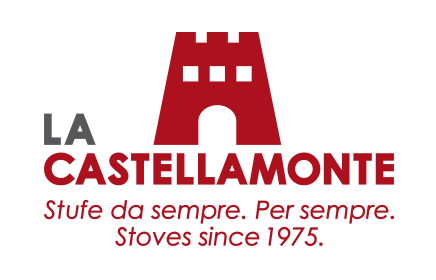The ancient ceramic tradition of Castellamonte was born 6,000 years ago in the Neolithic period. The presence on Castellamonte’s hills of easily removable clay has, over the centuries, allowed an art and a technique in the processing and transformation of unique ceramic objects.
Our company started working in 1976, under the name of R.P. Castellamonte, producing traditional ceramics and furniture. Its founder is Roberto Perino, a Master of Arts with degree at the Art Institute F. Faccio of Castellamonte.
In 1984, Silvana Neri became a part of the company and in 1987 started the LA CASTELLAMONTE brand with the production of ceramic stoves which in a short time became the main activity of the company.
Since then, technological research has been launched to improve energy performance and, for the first time in history, a Castellamonte stove is tested at the Politecnico of Torino – Energy Department – in 1994, beginning a cooperation that will continue over the years.
In 2011, La Castellamonte began a cooperation with Adriano Design, which led to the creation of the new Stack Stoves line.
All stoves by La Castellamonte are hand-made in our factory, through a process of constant quality. They all have CE CERTIFICATION for Europe and some models are also certified for the specific Austrian, German and Swiss regulations.
Last year, La Castellamonte also achieved US and Canadian UL and ULc certification and EPA certification on emissions and yields for Rondo and Round Stack models.
Further curiosity about stove history …
The long tradition of the Castellamonte stove
The 19th century marks the true triumph of the classic stove of Castellamonte, but already in the centuries before these stoves are appreciated and demanded. Towards the end of the 18th century, the first terracotta fireplace with hot air and visible fire is produced in Castellamonte: the “Franklin” fireplace, from the name of the inventor who had studied the principle of convection applied to heating systems. This fireplace will have a great success and will greatly contribute to the fame of the local ceramic tradition.
The first productions are attributed to the ceramic factory Reasso, an old craftsman’s dynasty, established for centuries in the heart of S. Rocco between the alleys B. De Rossi and Franklin. But it is the 19th century which marks the true triumph of the classic Castellamonte stove, which is embellished with elaborate decorations, is colored with lively glazures and becomes a precious decorative object. It seems that some monumental stoves have even been sent out to far Russia, in Petersburg. After the Second World War, the stove is no longer used for many years, supplanted by various heating systems. After decades of oblivion, for the most attention to the environmental values, the economy of exercise, the salubility of the heat, not least the courage and the enthusiasm of a few valiant young craftsmen who resumed the ceramic tradition, the Castellamonte stoves are brought to the honor of the chronicles and the recognition of their unmistakable validity both for heating and for furnishing new and ancient houses.
The Art of the Stove and Ceramic of Castellamonte, the relationship with the Artists.
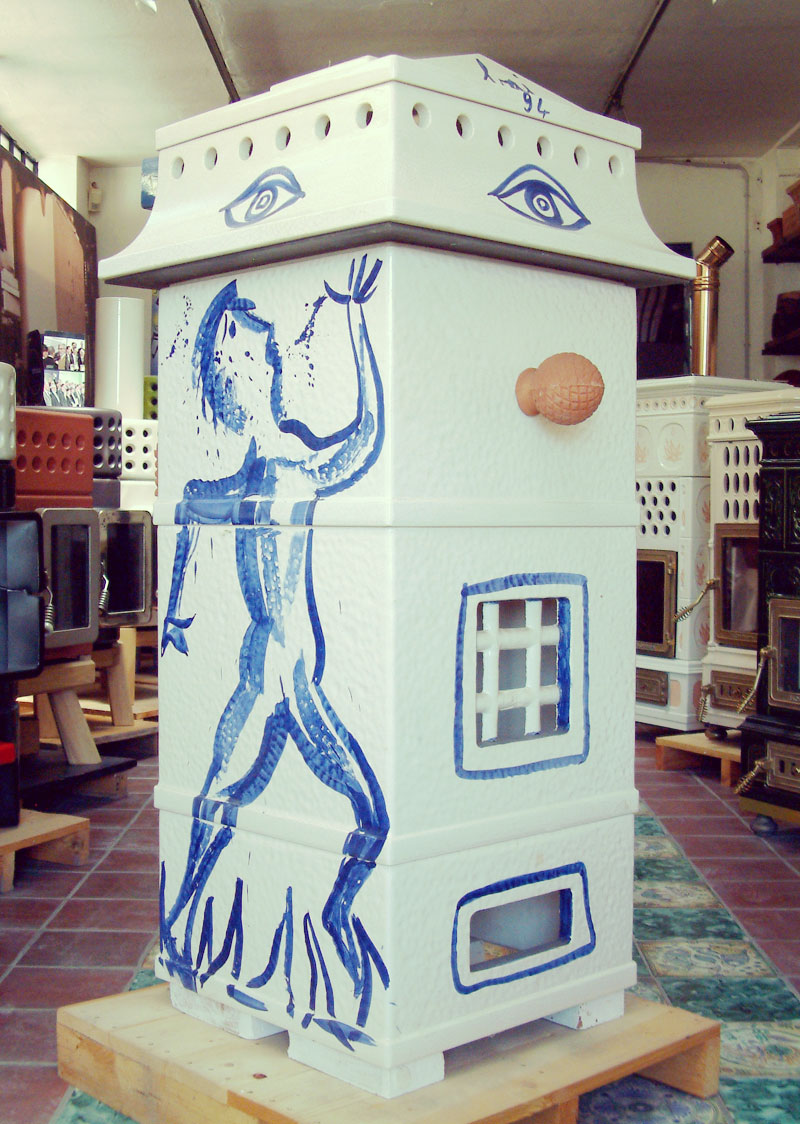
Vulcano stove decorated by Enrico Baj.
There are some lucky moments in which, even an object considered for its function or decoration, gets to levels that go beyond the intentionality of the designer and his commercial destination. On the occasion of the XXIV Ceramic Exhibition, the city of Castellamonte, was honored to host an illustrious guest: Enrico Baj. The dedication of the Milanese master was to combine art with local craftsmanship and a collaboration with La Castellamonte, (still known as RP Castellamonte), has provided cooked dishes and trays, processing fragments, spacers oven, friezes and capitals, which have been assembled in an apparent accident. A series of “heads” came out, with bizarre names and different expressions: astonished and attoned, hilarious or sad, ironic and threatening.
On the Stove mod. Vulcano, duly replicated in an unusual sequence, Enrico Baj has left, with the help of fire, the indelible mark of his painting.
The Torino Design Exhibition, which took place in Turin between April and June 1995, has included, among the exhibits, the Vulcano stove, entirely in terracotta, as an example of a traditional object that offers innovative aspects, both in operation and in aesthetic appearance.
The contrast between the natural terracotta surface and the modern design creates an object in which the thread of continuity between the past and the future is tangible.
In the Delirium Design theme exhibition dedicated to Edgar Allan Poe, on the occasion of the decade of the Exposition Abitare il Tempo (Verona 1995), a stove “La Castellamonte” was inserted, reinterpreted and redesigned by Architect William Sawaya. The neo-gothic style of the stove underlined by the arches and columns evokes the atmosphere of famous tales and living suggestions. The image of the painted fire on the walls, almost overlapping and mingling with internal flames, makes it a disquieting object, in which the boundary between reality and fantasy may also not exist.
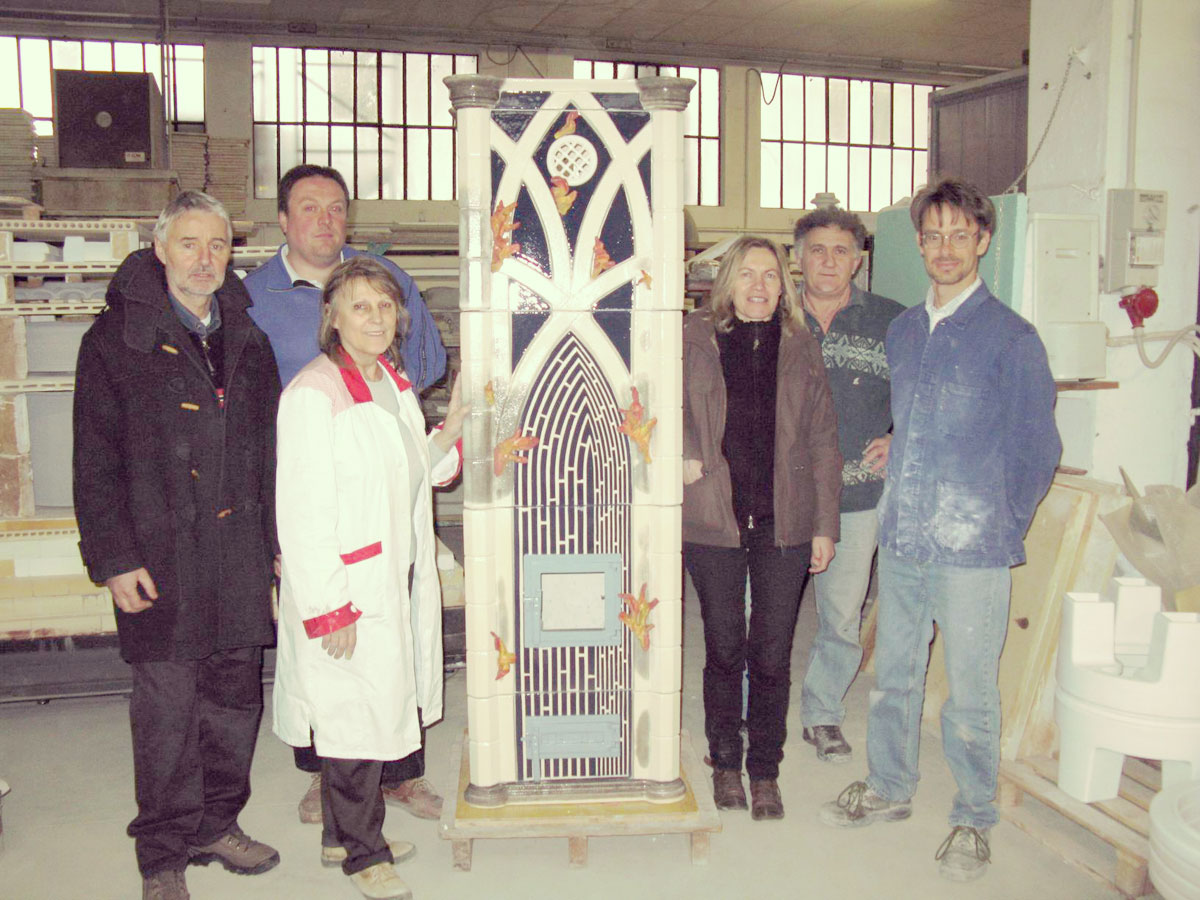
Stove 'La Castellamonte' reinterpreted and redesigned by Architect William Sawaya.
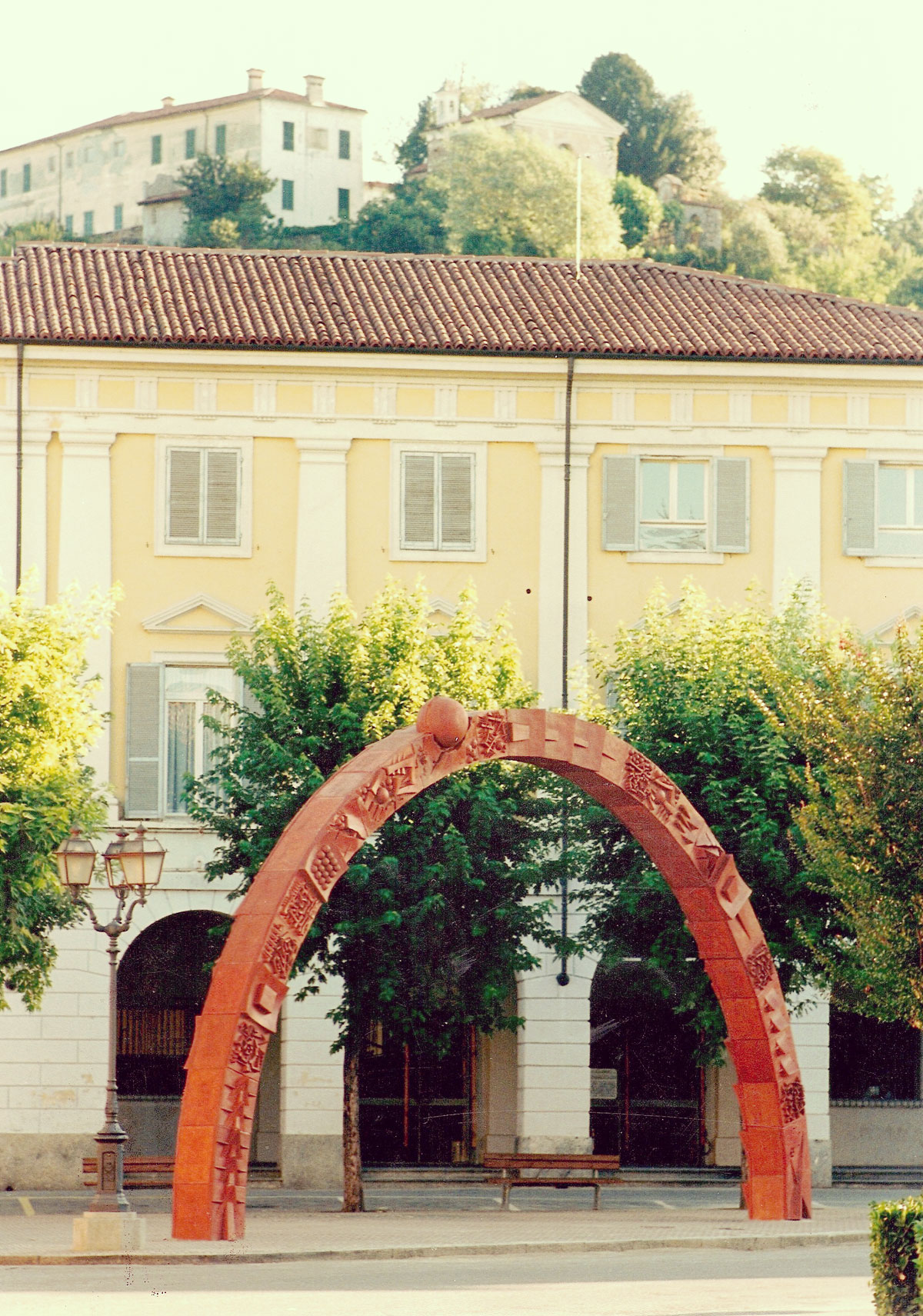
Arc en Ciel by Arnaldo Pomodoro.
In 1994, the artist Arnaldo Pomodoro, guest of XXXV Ceramic Exhibition, designed a monumental work called Arc en Ciel, consisting of about 130 panels bearing the typical signs of the artist, made by La Castellamonte (formerly RP) and visible in the Martiri della Libertà square in Castellamonte.
Another great work of about 6 mt. of height, visible in P.zza della Repubblica, is the Stove Monument, designed in 2008 by the artist Ugo Nespolo, and realized by La Castellamonte, in collaboration with the Professors Sandra Baruzzi and Guglielmo Marthyn, made up of 200 large ceramic tiles, enamelled in white with black paintings, painted by the Artist itself.
Last but not least, we can mention the Tower of Babel, designed by the artist Silvio Vigliaturo of Chieri and made by La Castellamonte, visible at the garden in front of the Antonelliana Walls, consisting of 120 glazed enamelled disks with colored reliefs.
